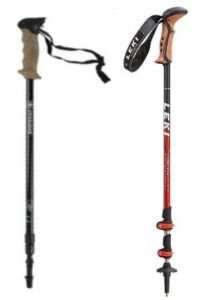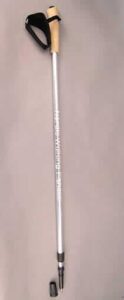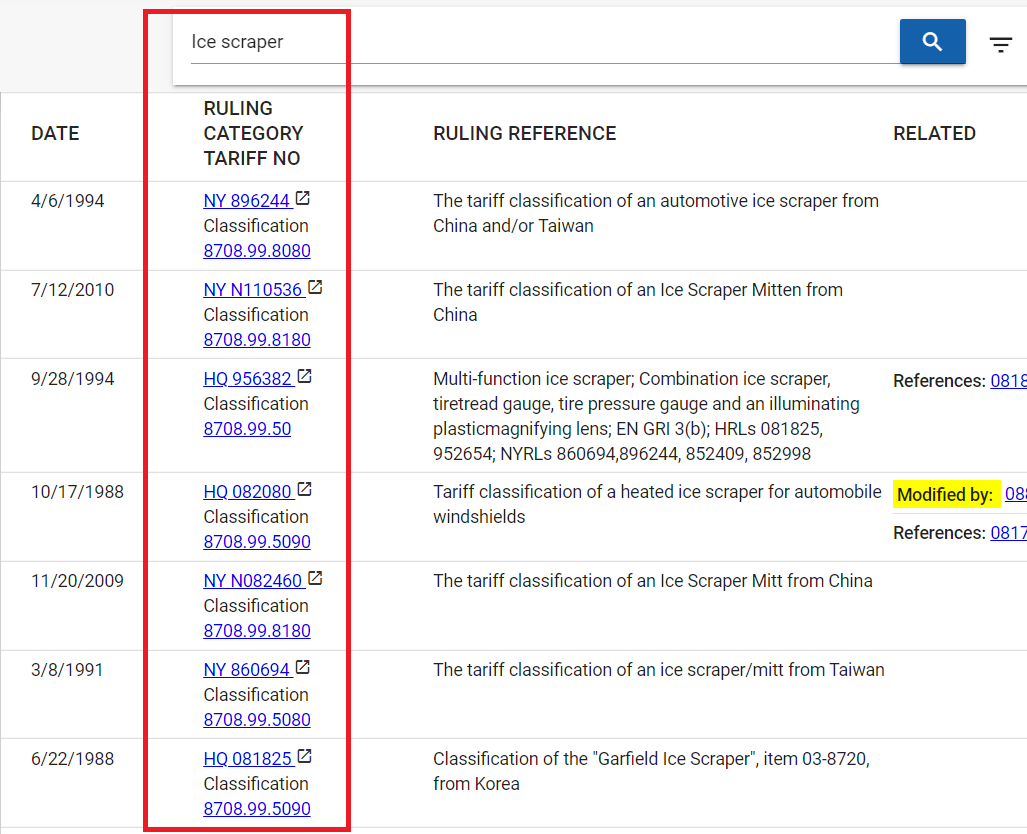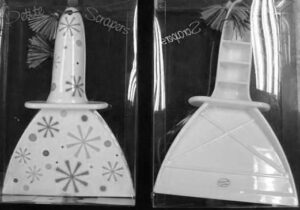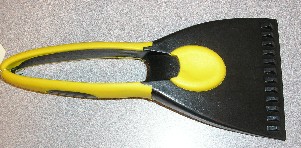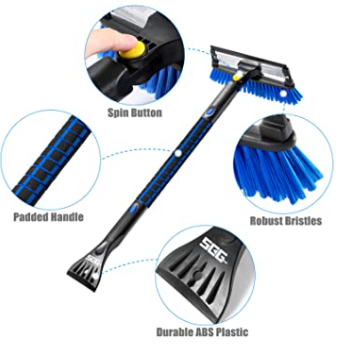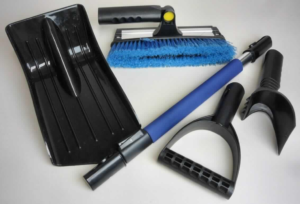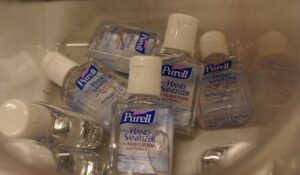“Piggy Bank” was classified as “toys”(HS:9503) by U.S. Customs ruling N005466.
However, U.S. Customs reconsider the decision whether this item should be classified to “Articles of plastics”(HS:3924).
*Image of the targeting item


Source:toyscentral
Before Revocation
The targeting item is called “Zillions Counting Pig Toy Bank”.
The article is a large, translucent pig bank with a digital reader that indicates the amount of money in the bank. This toy encourages a child to save money and tells them the amount in the bank deposited. The toys will be classifiable in Chapter 95 of the Harmonized Tariff Schedule of the United States as toys representing animals.
At the first decision, U.S. Customs classified it in 9503.00.
And here is the Dutch Customs classification record, it’s classified in 9503.00 too.
| Item image | 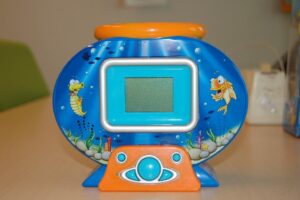 |
|---|---|
| Issued Country | Dutch Customs |
| Reference | NLRTD-2009-000982 |
| Issuing date | 2009-05-07 |
| Item name | BANKS |
| Classified HS code | 9503.00 |
| Details & Customs Opinion | A digital money box with plastic for toddlers include the following features: – at the top with a slot for coins – at the front: a LCD display of 43 x 32 mm, various controls, and built-in speakers – to the back side a circular opening in order to be able to remove coins, and – the bottom side with a battery and switch, – acoustic signals, – dimensions of approximately 180 x 150 x 55 mm. The piggy bank with inaccurate calculation mode (POS) operates on three AA batteries and has an interactive character. A digital fish named Gil counts the money. The more spared the more functions (games) are available. The electronic device is offered along with three batteries and put up for retail sale and packed in a blister pack. |
And the ENs to Heading 9503 state below.
ENs to Heading 9503(D) Other toys. This group covers toys intended essentially for the amusement of persons (children or adults). However, toys which, on account of their design, shape, or constituent material, are identifiable as intended exclusively for animals, e.g., pets, do not fall in this heading but are classified in their own appropriate heading. This group includes: All toys not included in (A) to (C). Many of the toys are mechanically or electrically operated.
These include:
(xxii) Toy money boxes
It seems there is no problem to classify the “piggy bank” in 9503.
why U.S. Customs need to reconsider the decision whether this item should be classified to “Articles of plastics”(HS:3924)?
After Review
U.S. Customs has reviewed N005466 and has determined the ruling letters to be in error.
The issue is the definition of “Toys”.
To clarify the meaning of “Toys”, U.S. Customs referred to the Court case of “Nadel & Sons Toy Corp. v. the United States, 4 Ct. Int’l Trade 20 (1982)”
The issue of this court case is whether this plastic replica of a cast-iron bank in the figure of Uncle Sam is classified as “toy” or “articles of plastics”.
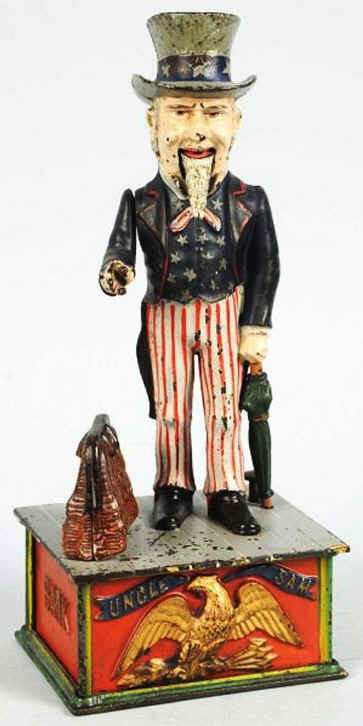
Source:americanantiquities.com
The figure was standing on a
decorated platform that served as a receptacle of coins. One of Uncle Sam’s
arms was extended and its hand was designed to accommodate a coin. When
a button was pressed, the arm dropped the coin into a satchel that opened.
The Court found that the purpose of the Uncle Sam bank was to save and
store coins. The Court stated that “the coins are received into the article in a
manner that amuses is incidental and not controlling,” and that there was
little “amusement value” in such a pastime, which would be soon abandoned.
In the instant case, the physical features of the subject banks are not
characteristic of a toy. These banks serve a utilitarian purpose, and if they
provide any amusement, it is incidental to the utilitarian purpose. Similar to
the toy bank in Nadel, the purpose of the banks is to save and store coins,
with very little amusement value.
The court dismissed the claim that “Uncle Sum” is to be classified as “Toys” because it has very little amusement value.
Conclusion
“Piggy Bank” and “Uncle Sum” are similar items that have very little amusement value.
Based on the Court decision, U.S. Customs considered that although the subject banks have amusing appearances, as they are representations of recognizable licensed animated characters, they do “not promote pretend and role play, stimulate imagination, combat a child’s ennui, promote mimetic activity or provide the opportunity for children to develop manipulative skill or muscular dexterity” and are also not characteristic of a toy.
Therefore they revoked the ruling and reclassified it as “articles of plastics” (HS:3924).
Source: Customs Bulletin
My opinion
To be classified as “Toys”, it has to have big amusement value.
But it’s solely depending on one’s opinion whether it has big amusement or little amusement.
Some might find it big amusement just on the appearances.
So the borderline between “Toy” and material-based classification is ambiguous.
We need to consider how Customs find it amusing before making a declaration.
